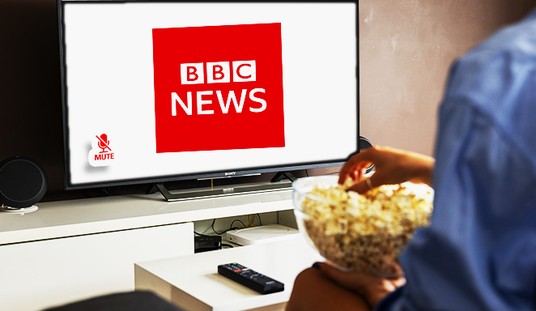In Reason magazine, Veronique de Rugy notes that–as usual–conventional leftwing wisdom regarding President Bush is wrong:
When Barack Obama was running for president, he made no secret about his plan to “restore common-sense regulation”–read: increase regulation–by closing the regulatory loopholes he thought the Republicans had opened. Deregulation, he argued repeatedly, is the source of evil. Much like Franklin Delano Roosevelt during the Great Depression, Obama offered a sweeping, ambitious agenda: new financial regulations, new labor regulations, new energy regulations, and more.
Today Obama is the president-elect of the United States. With Democratic majorities in Congress, he will have tremendous power to push his “reforms.” And unlike FDR before him, President Obama won’t have to create a regulatory system from scratch in order to increase government control of people’s lives. His groundwork was laid by George W. Bush.
Some people still seem to think Republicans take a hands-off approach to regulation, probably because the party is always quick to criticize the burdens regulations place on businesses. But Republican rhetoric doesn’t always match Republican policy. In 2007, according to Wayne Crews of the Competitive Enterprise Institute, roughly 50 regulatory agencies issued 3,595 final rules, ranging from boosting fuel economy standards for light trucks to continuing a ban on bringing torch lighters into airplane cabins. Five departments (Commerce, Agriculture, Homeland Security, Treasury, and the Environmental Protection Agency) accounted for 45 percent of the new regulations.
Since Bush took office in 2001, there has been a 13 percent decrease in the annual number of new rules. But the new regulations’ cost to the economy will be much higher than it was before 2001. Of the new rules, 159 are “economically significant,” meaning they will cost at least $100 million a year. That’s a 10 percent increase in the number of high-cost rules since 2006, and a 70 percent increase since 2001. And at the end of 2007, another 3,882 rules were already at different stages of implementation, 757 of them targeting small businesses.
Overall, the final outcome of this Republican regulation has been a significant increase in regulatory activity and cost since 2001. The number of pages added to the Federal Register, which lists all new regulations, reached an all-time high of 78,090 in 2007, up from 64,438 in 2001.
Meanwhile, a push for deregulation comes from a surprising source–Brian Lowry of the ancient show-biz bible, Variety magazine, who writes in an essay titled, “Reevaluating media regulations” that “Tough times may call for lax restrictions”:
If it takes a big man to admit he was wrong, said man needn’t be quite so magnanimous to concede that changing circumstances have altered his outlook.
The perils of media consolidation have been a longstanding concern. Even during a stint working for Tribune Co. as they futilely attempted to squeeze synergies out of TV-print combinations, I banged the drum against allowing TV, radio stations and newspapers coagulate in too few hands, fearing ethical abuses or the nagging appearance of them, as well as the loss of independent voices to watchdog government and the media itself.
Today, though, amid daily waves of depressing economic news, conflicted voices sound preferable to neutered or, worse, deceased ones.
It’s not a given that further relaxing restrictions on media consolidation would significantly benefit ailing broadcasters and newspapers at this late stage. Economies of scale certainly haven’t kept Time Warner from shedding staff at its magazines or Tribune out of bankruptcy.
Even so, the incoming Obama administration faces difficult choices involving big media nearly as nettlesome, in their own way, as the mess it’s grappling with regarding the Big Three automakers.
Jules Crittenden and Robert Stacy McCain spot one key way that regulations have significantly harmed multiple legacy media; the latter writes:
The absurd idea that a Connecticut newspaper might get a government bailout prompts Jules Crittenden to one of the few useful suggestions for saving print journalism:
Throwing out the FCC’s cross-ownership ban once and for all might also help.
The FCC’s obsolete prohibition on newspaper publishers owning broadcast franchises in the same markets has been bent, over the years, for a few politically-connected conglomerates — for instance, Cox owns both the Atlanta Journal-Constitution and WSB TV/radio in Atlanta.
There was a time when, if the ban had been repealed, newspapers would have purchased broadcasting outlets. If the ban were lifted now, the buyout pattern would be the other way around. But too little attention has been paid to how the FCC, by preventing consolidation between print and broadcast media, undermined the economic viability of print journalism.
The rise of cable television in the 1980s changed the game. Cable is not “broadcast” and thus is exempt from FCC regulation, and anyone who was paying attention should have realized how the growth of this new technology invalidated the FCC’s original rationale in banning cross-ownership. Newspapers could have benefitted by sharing editorial staff between print and broadcast, and using the broadcast outlet to promote the print product. But the entrenched New Deal-era mentality among regulators stifled such insights, and so the absurd wall between broadcast and print remained — with strategic exceptions, of course, for the big conglomorates that could curry favor in Washington.
As the Red Queen’s Race accelerates its velocity, newspapers lost $64 billion in share value in 2008. Which helps to explain why, as this poll notes, “Seventy-seven percent of Americans believe that the U.S. media is making the economic situation worse by projecting fear into people’s minds.”










Join the conversation as a VIP Member